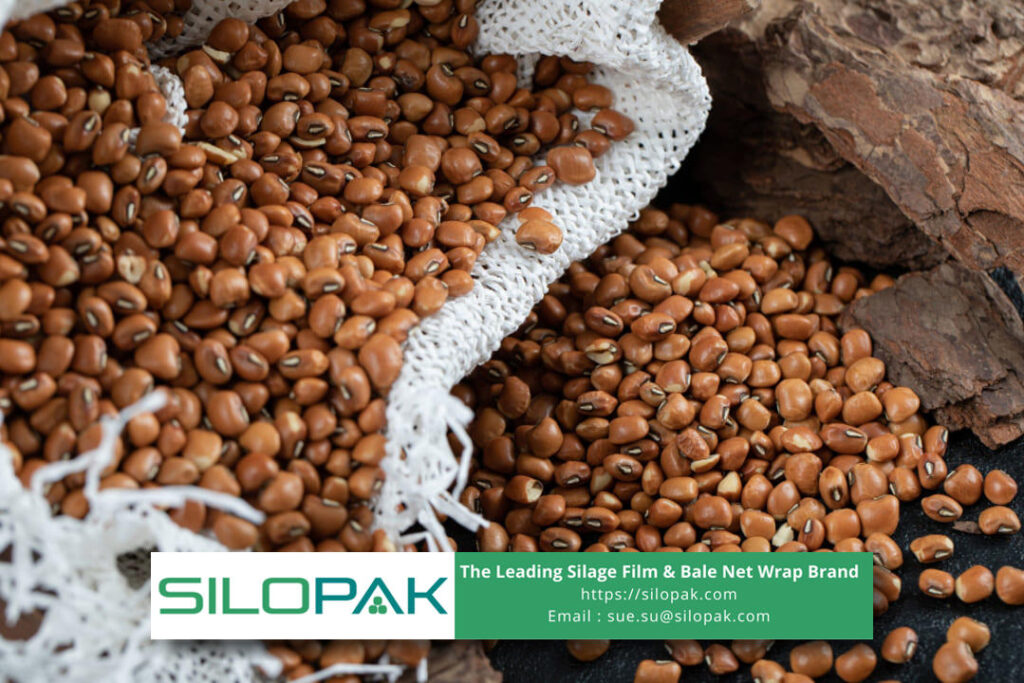
Cowpeas can grow in the same areas as corn, but even hotter. It has different types and different characteristics. This is the benchmark for using it, for example as hay. Preserving forage in dry form uses the excessing production during the season of abundance or harvest can be stored for use during the shortage season. The question is, do cowpeas make good hay?
contents
Do Cowpeas Make Good Hay? Check the Ideal Characteristics!
There are many types of annual legumes that are popular in the world, one of which is cowpea. This type of bean is suitable for planting in summer because it is resistant to even dry soil, and can be grown in soil with minimal irrigation.
Cowpeas can adapt to hot weather and grow in various countries. The type of cowpea that is suitable for use as hay is the vinyl type where this type has taller and stronger stems. Did you know that the cowpea plant has various benefits?
Another benefit besides the leaves or nuts is the ability to prevent soil erosion. Often farmers are annoyed with pests that attack, the presence of cowpea can drive away weeds, and the agricultural yields of this crop are also good.
Cowpeas can help improve soil texture, where the soil will be ready for planting the next crop. Even in hot conditions, cowpea thrives. Cowpea is not hard to grow in certain types of soil, so many farmers maximize their land by planting cowpea.
Many Uses of Cowpeas
The use of cowpea is not limited to one purpose only.
- Mainly, cowpea is beneficial for food.
- But not a few also use it as animal feed.
- Usually, farmers take advantage of cowpea plants by inviting livestock to graze cowpea forage directly. Farmers and breeders can choose the type of vines or shrubs.
- Some use cowpea by processing it into peanut flour and giving it to pigs.
Primarily, cattle can consume fresh cowpeas, but as a stock when unable to graze during winter, cowpeas will be preserved as silage or hay. It is usual practice and does not reduce the quality and content of cowpea as long as it is managed and stored.
The part used for animal feed is generally crop residue from seed production. Even though the waste is about 45-65% stem, 35-50% leaves, and sometimes roots, it still contains good nutrients such as protein and fiber. In addition, the husks left over from threshing are also widely used for animal feed. In some countries, cowpea is a side crop that has an important role.
In line with the need for animal feed, cowpea hay can be purchased at markets and traded. Although some grow them, they provide livestock with good and nutritious feed. Cowpea hay can have similar qualities to alfalfa hay when planted in a pattern. It also answers the most frequently asked question about do cowpeas make good hay. The best quality is obtained when it is cut or harvested at certain intervals and decreases as it approaches maturity.
More about Cowpea Preservation Techniques
Constraints such as seasons that change throughout the year encourage farmers or breeders to keep cowpeas available throughout the year. Of course, this requires the right method, not just storing it which will encourage microbes to grow and make them rot.
Well, apart from making cowpea hay, other techniques can be used to make cowpea forage last longer. So, farmers do not have to worry about running out of feed even though winter is coming which causes livestock to not be able to go to graze.
The main condition for making preservation is understanding how to store it properly. Do cowpeas make good hay? The availability of abundant or sufficient feed is certainly a means of supporting the optimal growth of livestock. Preserving cowpea will not reduce their quality, it’s just that the method and approach must be right.
The harvesting period also varies, based on the original purpose, for example, it will take around 150 days for the cowpea seeds to dry and be ready for harvest. Of course, the planting and harvesting times for making hay or other forage preservation will be different.
Although cowpea can live almost anywhere on dry land and areas, the success of planting cowpea still depends on the weather. Unsuitable weather causes cowpea leaves to become diseased so they are not fresh enough as a raw material to make preserved forage.
Cowpea Silage
Besides making hay and haulms you can also make it into silage. Making silage also requires proper technique. In making silage, it is recommended to add other types of feed as a mixture. Cowpea silage alone is usually too moist and rots easily.
Cowpeas can be mixed with corn, sorghum, or other types of feed. A mixture of cowpea and corn shows increasing body weight in livestock and produces good-quality silage. You will also need other ingredients such as water and 5% molasses. The process of making silage can meet the demand for feed in certain seasons.
Related to do cowpeas make good hay? Of course, that’s true but it depends on how you do it. More experience in making will allow you to mature and produce the best quality hay. However, you can not only make hay but can preserve it by other methods.
